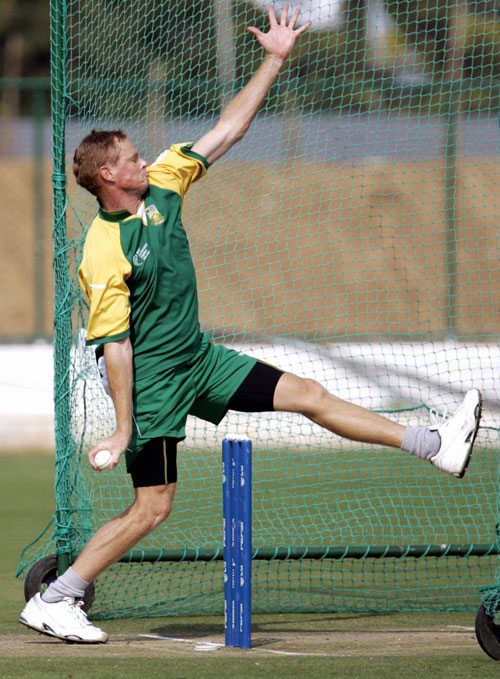It frustrates me at times when I hear the news that I’ve been anticipating for some time
Anderson injury causes England concern
Why is it frustrating? Because the ECB coaching system doesn’t seem to want to embrace technologies such as biomechanics to prevent this sort of thing.
Ever since I saw James Anderson bowl first in 2002 when making his ODI debut in Australia I have just thought stress fracture.
What happened in May 2006? Anderson hit by stress fracture
And his rehab began after a year out of the game. It was treated by remodelling his action. The bowling coach at the time was the rather inept Kevin Shine who tried to turn his mixed action into a side on action. While this would’ve maximised the swing he could generate I believe that his natural action is a chest on approach and it is only his delivery stride in the landing of his back foot that is causing him problems.
It took me quite some time to track a photo that demonstrates this but here’s one from 2009 after he had ignored the rehab following the recovery:

The key thing to note with this is that if you are bowling side on the front arm (left in this case) should be inside the line of the head. Jimmy clearly has his outside. The next thing to look at is the head position – this is falling to his left hand side. This is because his back foot is landing parallel to the return crease. He then pulls his left arm outside the left hand side of his head which causes his head to fall away to the left. This has the effect of pulling his left side down, twisting the back which will over time cause a stress fracture as the force after bowling as many overs as an international cricketer does wears away at the back.
Kevin Shine, the england bowling coach at the time, attempted to get his left arm inside the line of the head to straighten it up – the problem with that is that you have to turn yourself into a side on bowler. The solution in my mind and one that many bowlers who use technology come to is change the position of the back leg to be perpendicular to the return crease.
A good example would be Shaun Pollock who did exactly this to avoid injury:

Compare this to Anderson’s landing:

Having said all this the ECB really needs to consider papers like this one from the australian universities when advising bowlers early in their careers. It is far easier to change a bowling action when you’re 18-21 than when you’re over 30 as became increasingly obvious with Andrew Flintoff – his problems were different, attempts were made but in the end his career was brought to an early end because of a flawed bowling action
